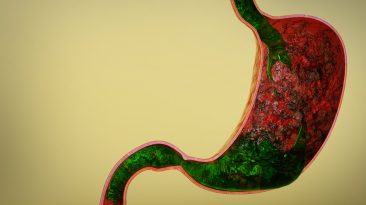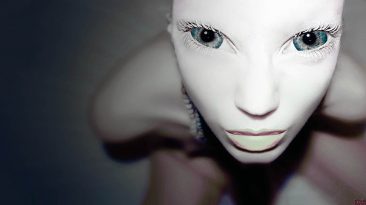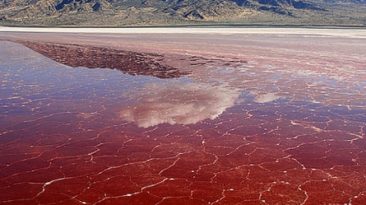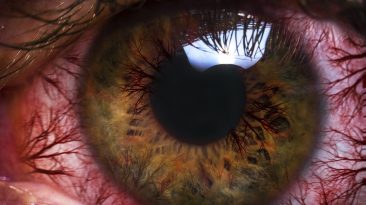COVID-19 has affected the entire world. It’s infected millions, and killed hundreds of thousands. Not only that, but it’s also changed the way we live, work, and interact with others.
But when will things finally get back to normal? For some people, that might not be until a vaccine is developed, which could take up to two years, or more. What will your life be like until then? What would this vaccine do to your body? And when will things start to go back to normal?
A COVID-19 vaccine will try to train our immune system. The idea is to harmlessly show the virus to your body to help recognize and fight it. So when you encounter the disease in real life, your body will know how to fight COVID-19.
Right now, we know the genetic code of the virus, which is extremely helpful for developing a vaccine. But scientists still have a lot to learn, which is why experts think we might not see a vaccine for up to two years. So what will our lives be like until then?
If the COVID-19 pandemic continues for another two years, don’t expect things to completely go back to what you’re used to. But you won’t be locked in your home for another two years either.
It’s likely that with most of the world being under quarantine, new cases of COVID-19 will reduce. And when that number decreases enough, governments may choose to open their economies back up. Some governments may choose to do this sooner than they should, so people can go back to work, and ease the unemployment problem.
Something you might see in retail stores are disinfecting robots. Some will be able to clean with disinfectant while others will have UV light attachments, as thats a potential way to kill COVID-19 on surfaces.
Even with most stores reopening, don’t expect to be in any crowded malls or restaurants right away. Reopening businesses will be a slow process. As we see in grocery stores right now, the number of customers allowed in at one time will likely be limited. You may also have to wait in line before you can go inside.
And while you’re in these stores, it will still be important to maintain a physical distance of at least 2 meters (6 feet). Handshakes, hugs, and any other forms of touching in public will no longer be normal.
What will likely be normal is everyone wearing masks. They may even become fashionable, as brands will hope to earn money on the fact that everyone will need one of these if they want to go out.
And if you have to travel in the next two years, expect to take even more precautions. Airports are beginning to test full-body disinfection devices. These are meant to disinfect a user within 40 seconds. Killing any viruses you might have on your skin or your clothes.
And before you board your plane, you might have to take a rapid COVID-19 blood test. These will produce test results in just 10 minutes before you board your plane.
People who definitely won’t be traveling will be those who have a pre-existing condition as they’ll need to be especially careful. Without a COVID-19 vaccine, they’ll still have the highest risk of dying if they catch the disease.
If the economy slowly starts to reopen, and we don’t see an uptick in the number of new cases, you can expect to see more stores reopen, and even public spaces like parks and beaches. Not only that, but there’s a chance schools could reopen as well.
Eventually, they may even become an essential service. Social distancing etiquette, and learning how to wash your hands properly, will start to become a part of the school curriculum. But even with all these re-openings, don’t expect to go to any concerts or sporting events, since large crowds make it easier for COVID-19 to spread. You can look forward to all that after you’ve been vaccinated.
And if you’ve been working from home all this time, you might continue to, even after the vaccine is available. Your company may realize there’s no need for office space anymore.
But what about the people who still can’t go back to work? Remember, when stores do reopen, they’ll have fewer customers in the store, and they’ll also have fewer employees. Millions of people will still be out of work due to their health, or their company not being able to rehire them.
This will further expand the need to create a universal basic income. This allows people to get a set amount of money each month, regardless of whether or not they’re working.
But this is if everything goes according to plan. Right now, how to safely restart our economies is still largely a mystery. A second wave of COVID-19 could happen if governments and people aren’t careful enough.
If we do see a second wave, all governments around the world may begin to track their citizens with bank records and phone usage in order to stop the spread. They could find out who to test if they know who’s been outside more than they should have been or who’s been in large gatherings.
Now, if we don’t see a second wave of COVID-19, this way of life could be our world’s new normal, at least until we’ve all been vaccinated. And we’re hoping this happens in less than two years. According to the World Health Organization, more than 70 teams of doctors and scientists are working to develop a COVID-19 vaccine.
Some are being tested in humans right now. Once we know a vaccine works, we’ll need to make a lot of it, and distribute it around the world. After that, hopefully, the world can go back to normal. I wonder if there’s a better way to fight off COVID-19, other than a vaccine? Maybe we can use UV lights?
Subscribe to What-If on YouTube or follow the show on Facebook Watch.
Sources
- “The legacy of the pandemic: 11 ways it will change the way we live”. 2020. Vox.
- “Coronavirus: What is a vaccine and how is one made?”. 2020. BBC News.
- “What happens if a coronavirus vaccine is never developed? It has happened before”. Rob Picheta, CNN. 2020. CNN.
- “Coronavirus: A visual guide to the economic impact”. 2020. BBC News.
- “Coronavirus: US volunteers test first vaccine”. 2020. BBC News.


















[…] Transcript and sources: https://whatifshow.com/what-if-it-takes-two-years-for-a-covid-19-vaccine/ […]